Study of the Course of Cement Hydration in the Presence of Waste Metal Particles and Pozzolanic Additives
Abstract
:1. Introduction
2. Materials and Research Methods
3. Results
3.1. Fresh Mortar Properties
3.1.1. Calorimetric Investigations
3.1.2. Ultrasound Propagation Velocity Method
3.2. Properties of Hardened Samples
3.2.1. Density and UPV
3.2.2. Microstructure
3.2.3. Compressive Strength Tests
3.2.4. Water Absorption Test
3.2.5. Sorptivity Test
4. Conclusions
Author Contributions
Funding
Institutional Review Board Statement
Informed Consent Statement
Data Availability Statement
Conflicts of Interest
References
- ACI 304.3R-96; Heavyweight Concrete: Measuring, Mixing, Transporting, and Placing. American Concrete Institute: Indianapolis, IN, USA, 2001.
- Sadrmomtazi, A.; Lotfi-Omran, O.; Nikbin, I.M. On the fracture parameters of heavy-weight magnetite concrete with different water-cement ratios through three methods. Eng. Fract. Mech. 2019, 219, 106615. [Google Scholar] [CrossRef]
- Ouda, A.S. Development of high-performance heavy density concrete using different aggregates for gamma-ray shielding. Prog. Nucl. Energy 2015, 79, 48–55. [Google Scholar] [CrossRef] [Green Version]
- Topçu, I.B. Properties of heavyweight concrete produced with barite. Cem. Concr. Res. 2003, 33, 815–822. [Google Scholar] [CrossRef]
- Basyigit, C. The physical and mechanical properties of heavyweight concretes used in radiation shielding. J. Appl. Sci. 2006, 6, 762–766. [Google Scholar] [CrossRef]
- Mironovs, V.; Broņka, J.; Korjakins, A.; Kazjonovs, J. Possibilities of application iron containing waste materials in manufacturing of heavy concrete. In Proceedings of the Civil Engineering’11: 3rd International Scientific Conference, Jelgava, Latvia, 12–13 May 2011; pp. 14–19. [Google Scholar]
- Pundiene, I.; Mironovs, V.; Korjakins, A.; Spudulis, E. Investigation of Hydration Features of the Special Concrete with Aggregates of Various Metal Particles. Key Eng. Mater. 2014, 604, 297–300. [Google Scholar] [CrossRef]
- Kazjonovs, J.; Bajare, D.; Korjakins, A. Designing of high density concrete by using steel treatment waste. In Proceedings of the 10th International Conference Modern Building Materials, Structures and Techniques, Vilnius, Lithuania, 19–21 May 2010; pp. 138–142. [Google Scholar]
- Kodali, V.K.; Prasanna, P.K. Steel Slag as a Substitute for Fine Aggregate in High Strength Concrete. Int. J. Eng. Res. Technol. 2014, 3, 810–814. [Google Scholar]
- Kan, Y.C.; Pei, K.C.; Chang, C.L. Strength and fracture toughness of heavy concrete with various iron aggregate inclusions. Nucl. Eng. Des. 2004, 228, 119–127. [Google Scholar] [CrossRef] [Green Version]
- Peng, Y.C.; Hwang, C.L. Development of high performance and high strength heavy concrete for radiation shielding structures. Int. J. Miner. Metall. Mater. 2011, 18, 89–93. [Google Scholar] [CrossRef]
- Ismail, Z.Z.; AL-Hashmi, E.A. Reuse of waste iron as a partial replacement of sand in concrete. Waste Manag. 2008, 28, 2048–2053. [Google Scholar] [CrossRef]
- Sharifi, S.; Bagheri, R.; Shirmardi, S.P. Comparison of shielding properties for ordinary, barite, serpentine and steel–magnetite concretes using MCNP-4C code and available experimental results. Ann. Nucl. Energy 2013, 53, 529–534. [Google Scholar] [CrossRef]
- Yang, K.H.; Mun, J.S.; Lee, H. Workability and Mechanical Properties of Heavyweight Magnetite Concrete. Mater. J. 2014, 111, 273–282. [Google Scholar] [CrossRef]
- Horszczaruk, E.; Sikora, P.; Zaporowski, P. Mechanical Properties of Shielding Concrete with Magnetite Aggregate Subjected to High Temperature. Procedia Eng. 2015, 108, 39–46. [Google Scholar] [CrossRef] [Green Version]
- Oto, B.; Gür, A.; Kavaz, E.; Çakır, T.; Yaltay, N. Determination of gamma and fast neutron shielding parameters of magnetite concretes. Prog. Nucl. Energy 2016, 92, 71–80. [Google Scholar] [CrossRef]
- Gencel, O.; Bozkurt, A.; Kam, E.; Korkut, T. Determination and calculation of gamma and neutron shielding characteristics of concretes containing different hematite proportions. Ann. Nucl. Energy 2011, 38, 2719–2723. [Google Scholar] [CrossRef]
- Mesbahi, A.; Azarpeyvand, A.A.; Shirazi, A. Photoneutron production and backscattering in high density concretes used for radiation therapy shielding. Ann. Nucl. Energy 2011, 38, 2752–2756. [Google Scholar] [CrossRef]
- Singh, B.S.; Ramana, K.V. Mechanical properties of heavy weight concrete using heavy weight coarse- aggregate as hematite. IJRET Int. J. Res. Eng. Technol. 2014, 3, 2321–7308. [Google Scholar]
- Esen, Y.; Doğan, Z.M. Investigation of usability of limonite aggregate in heavy-weight concrete production. Prog. Nucl. Energy 2018, 105, 185–193. [Google Scholar] [CrossRef]
- Demir, F.; Budak, G.; Sahin, R.; Karabulut, A.; Oltulu, M.; Şerifoǧlu, K.; Un, A. Radiation transmission of heavyweight and normal-weight concretes containing colemanite for 6 MV and 18 MV X-rays using linear accelerator. Ann. Nucl. Energy 2010, 37, 339–344. [Google Scholar] [CrossRef]
- Demir, F.; Budak, G.; Sahin, R.; Karabulut, A.; Oltulu, M.; Un, A. Determination of radiation attenuation coefficients of heavyweight- and normal-weight concretes containing colemanite and barite for 0.663 MeV γ-rays. Ann. Nucl. Energy 2011, 38, 1274–1278. [Google Scholar] [CrossRef]
- Esen, Y.; Berivan, Y. Investigation of some physical and mechanical properties of concrete produced with barite aggregate. Sci. Res. Essays 2010, 5, 3826–3833. [Google Scholar]
- Esen, Y.; Yilmazer, B. An investigation of X-ray and radio isotope energy absorption of heavyweight concretes containing barite. Bull. Mater. Sci. 2011, 34, 169–175. [Google Scholar] [CrossRef] [Green Version]
- Janković, K.; Stanković, S.; Bojović, D.; Stojanović, M.; Antić, L. The influence of nano-silica and barite aggregate on properties of ultra high performance concrete. Constr. Build. Mater. 2016, 126, 147–156. [Google Scholar] [CrossRef]
- Almeida Junior, T.A.; Nogueira, M.S.; Vivolo, V.; Potiens, M.P.A.; Campos, L.L. Mass attenuation coefficients of X-rays in different barite concrete used in radiation protection as shielding against ionizing radiation. Radiat. Phys. Chem. 2017, 140, 349–354. [Google Scholar] [CrossRef]
- Rezaei-Ochbelagh, D.; Azimkhani, S. Investigation of gamma-ray shielding properties of concrete containing different percentages of lead. Appl. Radiat. Isot. 2012, 70, 2282–2286. [Google Scholar] [CrossRef] [PubMed]
- Çullu, M.; Ertaş, H. Determination of the effect of lead mine waste aggregate on some concrete properties and radiation shielding. Constr. Build. Mater. 2016, 125, 625–631. [Google Scholar] [CrossRef]
- Alwaeli, M. Investigation of gamma radiation shielding and compressive strength properties of concrete containing scale and granulated lead-zinc slag wastes. J. Clean. Prod. 2017, 166, 157–162. [Google Scholar] [CrossRef]
- Çullu, M.; Bakırhan, E. Investigation of radiation absorption coefficients of lead-zinc mine waste rock mixed heavy concrete at 662–1460 keV energy range. Constr. Build. Mater. 2018, 173, 17–27. [Google Scholar] [CrossRef]
- Tijani, S.A.; Kamal, S.M.; Al-Hadeethi, Y.; Arib, M.; Hussein, M.A.; Wageh, S.; Dim, L.A. Radiation shielding properties of transparent erbium zinc tellurite glass system determined at medical diagnostic energies. J. Alloys Compd. 2018, 741, 293–299. [Google Scholar] [CrossRef]
- Farokhzad, R.; Dadashi, A.; Sohrabi, A. The effect of ferrophosphorus aggregate on physical and mechanical properties of heavy-weight concrete. Constr. Build. Mater. 2021, 299, 123915. [Google Scholar] [CrossRef]
- El-Sayed, T.A. Performance of heavy weight concrete incorporating recycled rice straw ash as radiation shielding material. Prog. Nucl. Energy 2021, 135, 103693. [Google Scholar] [CrossRef]
- Abo-El-Enein, S.A.; El-Sayed, H.A.; Ali, A.H.; Mohammed, Y.T.; Khater, H.M.; Ouda, A.S. Physico-mechanical properties of high performance concrete using different aggregates in presence of silica fume. HBRC J. 2014, 10, 43–48. [Google Scholar] [CrossRef] [Green Version]
- Esen, Y.; Doğan, Z.M. Evaluation of physical and mechanical characteristics of siderite concrete to be used as heavy-weight concrete. Cem. Concr. Compos. 2017, 82, 117–127. [Google Scholar] [CrossRef]
- Akkurt, I.; Basyigit, C.; Kilincarslan, S.; Mavi, B.; Akkurt, A. Radiation shielding of concretes containing different aggregates. Cem. Concr. Compos. 2006, 28, 153–157. [Google Scholar] [CrossRef]
- Mehta, P.K.; Monteiro, P.J.M. Concrete Microstructure, Properties and Materials, 3rd ed.; McGraw-Hill Education: New York, NY, USA, 2006. [Google Scholar]
- Puzirevskis, S.; Mironovs, V. Heavy weight concrete and its usage. In Proceedings of the 8th International Conference Materials, Environment, Technology, Riga, Latvia, 19–20 June 2013; pp. 108–110. [Google Scholar]
- Alwaeli, M. The implementation of scale and steel chips waste as a replacement for raw sand in concrete manufacturing. J. Clean. Prod. 2016, 137, 1038–1044. [Google Scholar] [CrossRef]
- Tufekci, M.M.; Gokce, A. Development of heavyweight high performance fiber reinforced cementitious composites (HPFRCC) –Part II: X-ray and gamma radiation shielding properties. Constr. Build. Mater. 2018, 163, 326–336. [Google Scholar] [CrossRef]
- Gencel, O. Physical and mechanical properties of concrete containing hematite as aggregates. Sci. Eng. Compos. Mater. 2011, 18, 191–199. [Google Scholar] [CrossRef]
- Gencel, O.; Brostow, W.; Ozel, C.; Filiz, M. Concretes containing hematite for use as shielding barriers. Mater. Sci-Medzg. 2010, 16, 249–256. [Google Scholar]
- Dahiru, D. Investigation of the compressive strength of heavy concrete made with locally sourced barite aggregates. J. Appl. Sci. 2008, 3, 447–455. [Google Scholar]
- Florez, R.; Colorado, H.A.; Alajo, A.; Giraldo, C.H.C. The material characterization and gamma attenuation properties of Portland cement-Fe3O4 composites for potential dry cask applications. Prog. Nucl. Energy 2019, 111, 65–73. [Google Scholar] [CrossRef]
- Colorado, H.A.; Garcia, E.; Buchely, M.F. White Ordinary Portland Cement blended with superfine steel dust with high zinc oxide contents. Constr. Build. Mater. 2016, 112, 816–824. [Google Scholar] [CrossRef]
- Rubio-Cintas, M.D.; Barnett, S.J.; Perez-García, F.; Parron-Rubio, M.E. Mechanical-strength characteristics of concrete made with stainless steel industry wastes as binders. Constr. Build. Mater. 2019, 204, 675–683. [Google Scholar] [CrossRef] [Green Version]
- Azeez, M.O.; Ahmad, S.; Al-Dulaijan, S.U.; Maslehuddin, M.; Abbas Naqvi, A. Radiation shielding performance of heavy-weight concrete mixtures. Constr. Build. Mater. 2019, 224, 284–291. [Google Scholar] [CrossRef]
- Buratti, N.; Mazzotti, C.; Savoia, M. Post-cracking behaviour of steel and macro-synthetic fibre-reinforced concretes. Constr. Build. Mater. 2011, 25, 2713–2722. [Google Scholar] [CrossRef]
- Xu, Z.; Hao, H.; Li, H.N. Experimental study of dynamic compressive properties of fibre reinforced concrete material with different fibres. Mater. Des. 2012, 33, 42–55. [Google Scholar] [CrossRef]
- Xu, Z.; Hao, H.; Li, H.N. Mesoscale modelling of fibre reinforced concrete material under compressive impact loading. Constr. Build. Mater. 2011, 26, 274–288. [Google Scholar] [CrossRef]
- Bai, S.; Guan, X.; Li, H.; Ou, J. Effect of the specific surface area of nano-silica particle on the properties of cement paste. Powder Technol. 2021, 392, 680–689. [Google Scholar] [CrossRef]
- Ramezanianpour, A.A.; Mortezaei, M.; Mirvalad, S. Synergic effect of nano-silica and natural pozzolans on transport and mechanical properties of blended cement mortars. J. Build. Eng. 2021, 44, 102667. [Google Scholar] [CrossRef]
- Zhao, L.; Guo, X.; Ge, C.; Li, Q.; Guo, L.; Shu, X.; Liu, J. Mechanical behavior and toughening mechanism of polycarboxylate superplasticizer modified graphene oxide reinforced cement composites. Compos. Part B Eng. 2017, 113, 308–316. [Google Scholar] [CrossRef]
- Cai, R.; Tian, Z.; Ye, H.; He, Z.; Tang, S. The role of metakaolin in pore structure evolution of Portland cement pastes revealed by an impedance approach. Cem. Concr. Compos. 2021, 119, 103999. [Google Scholar] [CrossRef]
- Kocak, Y. Effects of metakaolin on the hydration development of Portland–composite cement. J. Build. Eng. 2020, 31, 101419. [Google Scholar] [CrossRef]
- Lin, R.S.; Han, Y.; Wang, X.Y. Experimental study on optimum proportioning of Portland cements, limestone, metakaolin, and fly ash for obtaining quaternary cementitious composites. Case Stud. Constr. Mater. 2021, 15, e00691. [Google Scholar] [CrossRef]
- Palou, M.T.; Kuzielová, E.; Novotný, R.; Šoukal, F.; Žemlička, M. Blended cements consisting of Portland cement–slag–silica fume–metakaolin system. J. Therm. Anal. Calorim. 2016, 125, 1025–1034. [Google Scholar] [CrossRef]
- Dragomirová, J.; Palou, M.T.; Kuzielová, E.; Žemlička, M.; Novotný, R.; Gméling, K. Optimization of cementitious composite for heavyweight concrete preparation using conduction calorimetry. J. Therm. Anal. Calorim. 2020, 142, 255–266. [Google Scholar] [CrossRef]
- Šeputytė-Jucikė, J.; Kligys, M.; Sinica, M. The effects of modifying additives and chemical admixtures on the properties of porous fresh and hardened cement paste. Constr. Build. Mater. 2016, 127, 679–691. [Google Scholar] [CrossRef]
- Castro, J.; Bentz, D.; Weiss, J. Effect of sample conditioning on the water absorption of concrete. Cem. Concr. Compos. 2011, 33, 805–813. [Google Scholar] [CrossRef]
- Trtnik, G.; Turk, G.; Kavčič, F.; Bosiljkov, V.B. Possibilities of using the ultrasonic wave transmission method to estimate initial setting time of cement paste. Cem. Concr. Res. 2008, 38, 1336–1342. [Google Scholar] [CrossRef] [Green Version]
- Villar-Cociña, E.; Valencia-Morales, E.; González-Rodríguez, R.; Hernández-Ruíz, J. Kinetics of the pozzolanic reaction between lime and sugar cane straw ash by electrical conductivity measurement: A kinetic–diffusive model. Cem. Concr. Res. 2003, 33, 517–524. [Google Scholar] [CrossRef]
- Kadri, E.H.; Aggoun, S.; De Schutter, G.; Ezziane, K. Combined effect of chemical nature and fineness of mineral powders on Portland cement hydration. Mater. Struct. Constr. 2010, 43, 665–673. [Google Scholar] [CrossRef]
- Korpa, A.; Kowald, T.; Trettin, R. Hydration behaviour, structure and morphology of hydration phases in advanced cement-based systems containing micro and nanoscale pozzolanic additives. Cem. Concr. Res. 2008, 38, 955–962. [Google Scholar] [CrossRef]
- Saccani, A.; Sandrolini, F.; Andreola, F.; Barbieri, L.; Corradi, A.; Lancellotti, I. Influence of the pozzolanic fraction obtained from vitrified bottom-ashes from MSWI on the properties of cementitious composites. Mater. Struct. 2005, 38, 367–371. [Google Scholar] [CrossRef]
- Szeląg, M. Fractal characterization of thermal cracking patterns and fracture zone in low-alkali cement matrix modified with microsilica. Cem. Concr. Compos. 2020, 114, 103732. [Google Scholar] [CrossRef]
- Mermerdas, K.; Süleyman, I.; Zeynep, A.; Sevin, E.; Ismail, G. Combined effects of microsilica, steel fibre and artificial lightweight aggregate on the shrinkage and mechanical performance of high strength cementitious composite. Constr. Build. Mater. 2020, 262, 120048. [Google Scholar] [CrossRef]
- Gesoglu, M.; Güneyisi, E.; Sabah, A.D.; Fakhraddin, M.G. Properties of low binder ultra-high performance cementitious composites: Comparison of nanosilica and microsilica. Constr. Build. Mater. 2016, 102, 706–713. [Google Scholar] [CrossRef]
- Khalaf, M.A.; Ban, C.C.; Ramli, M. The constituents, properties and application of heavyweight concrete: A review. Constr. Build. Mater. 2019, 215, 73–89. [Google Scholar] [CrossRef]
- Snellings, R.; Mertens, G.; Elsen, J. Supplementary Cementitious Materials. Rev. Mineral. Geochem. 2012, 74, 211–278. [Google Scholar] [CrossRef]
- Kassim, K.A.; Chern, K.K. Lime stabilized Malaysian cohesive soils. Malays. J. Civ. Eng. 2004, 16, 13–23. [Google Scholar] [CrossRef]
- Nawy, E.G. Reinforced Concrete: A Fundamental Approach; Prentice Hall: Hoboken, NJ, USA, 2000. [Google Scholar]
- Detwiler, R.J.; Mehta, P.K. Chemical and Physical Effects of Silica Fume on the Mechanical Behavior of Concrete. Mater. J. 1989, 86, 609–614. [Google Scholar] [CrossRef]
- Englehardt, J.D.; Peng, C. Pozzolanic filtration/solidification of radionuclides in nuclear reactor cooling water. Waste Manag. 1995, 15, 585–592. [Google Scholar] [CrossRef]
- Izquierdo, I.S.; Izquierdo, O.S.; Ramalho, M. Physical and mechanical properties of concrete using residual powder from organic waste as partial cement replacement. Rev. Ing. Construcción 2018, 33, 229–240. [Google Scholar] [CrossRef] [Green Version]
- Shi, C.; Wu, Y.; Riefler, C.; Wang, H. Characteristics and pozzolanic reactivity of glass powders. Cem. Concr. Res. 2005, 35, 987–993. [Google Scholar] [CrossRef]
- Velumani, P.; Manikandan, P. Steel mill scale waste and granite powder waste in concrete production—An experimental study. Mater. Today Proc. 2020, 37, 1748–1752. [Google Scholar] [CrossRef]
- Garg, S.H. Durability of concrete made with steel filings as a replacement of fine aggregate. Mater. Today Proc. 2022, 49, 3217–3221. [Google Scholar] [CrossRef]
- Alsayed, S.H.; Amjad, M.A. Strength, Water Absorption and Porosity of Concrete Incorporating Natural and Crushed Aggregate. J. King Saud Univ. Eng. Sci. 1996, 8, 109–119. [Google Scholar] [CrossRef]
- Singh, M.; Srivastava, A.; Bhunia, D. Long term strength and durability parameters of hardened concrete on partially replacing cement by dried waste marble powder slurry. Constr. Build. Mater. 2019, 198, 553–569. [Google Scholar] [CrossRef]
- Sicakova, A.; Draganovska, M.; Kovac, M. Water Absorption Coefficient as a Performance Characteristic of Building Mixes Containing Fine Particles of Selected Recycled Materials. Procedia Eng. 2017, 180, 1256–1265. [Google Scholar] [CrossRef]
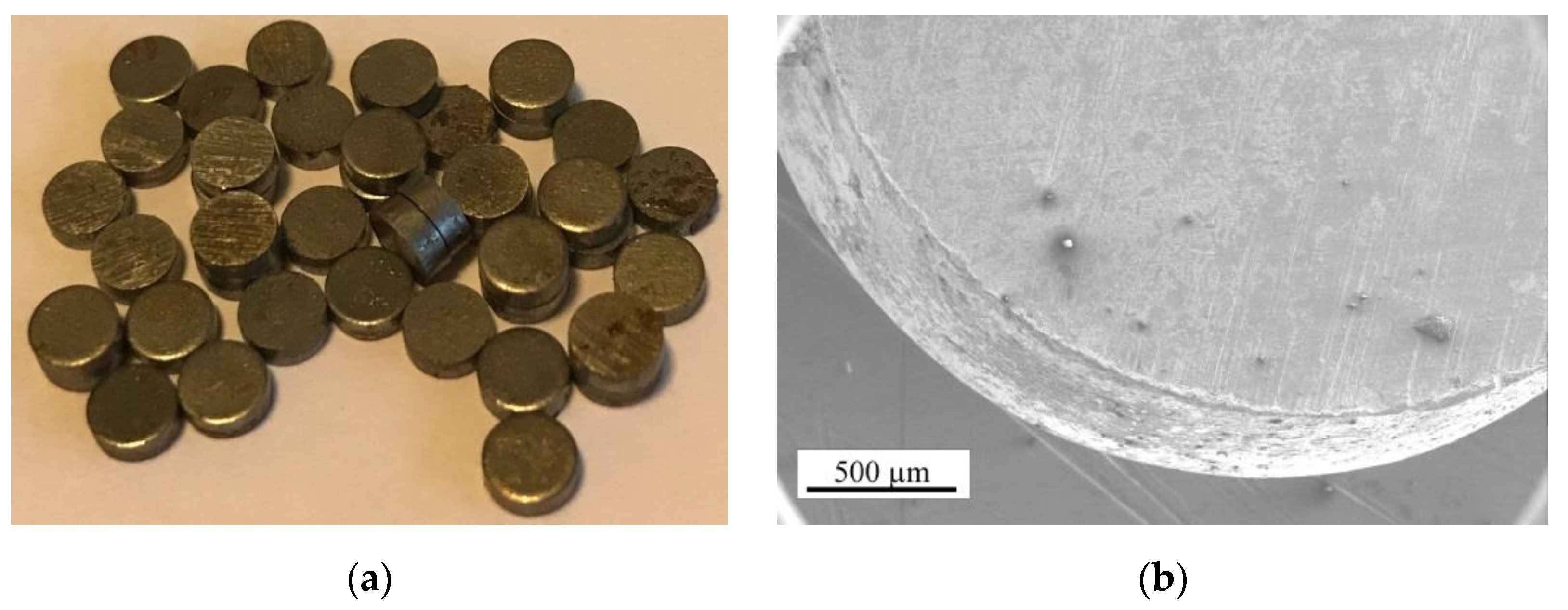

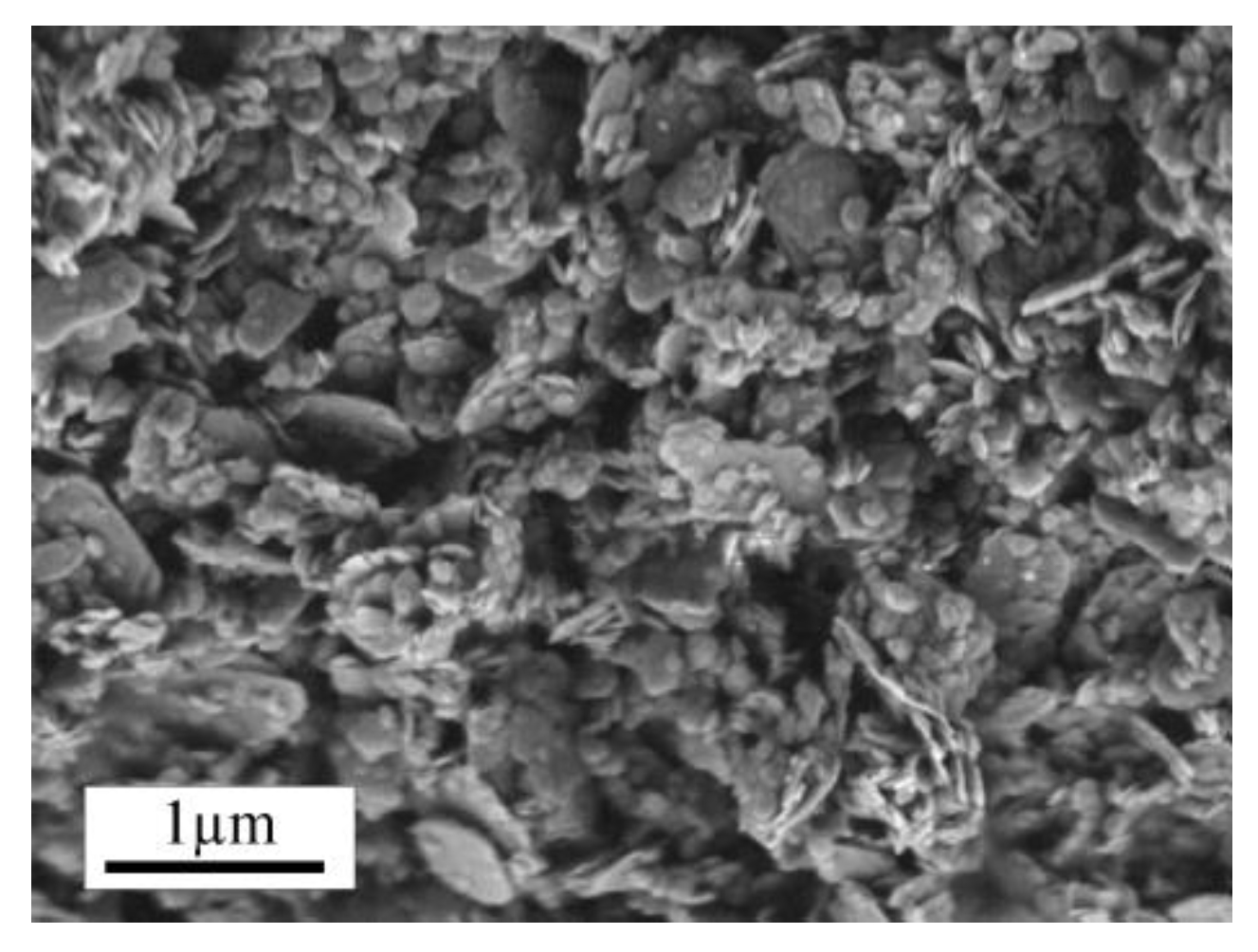
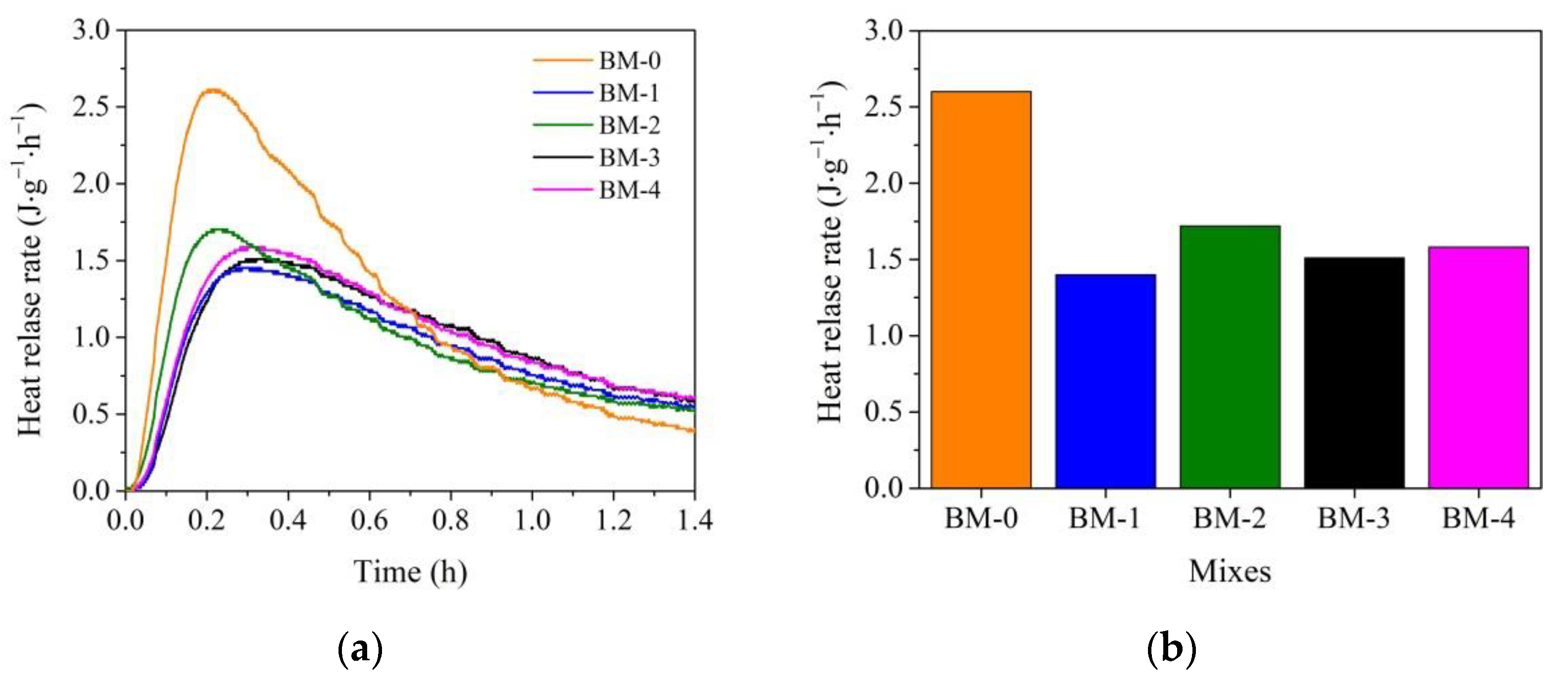
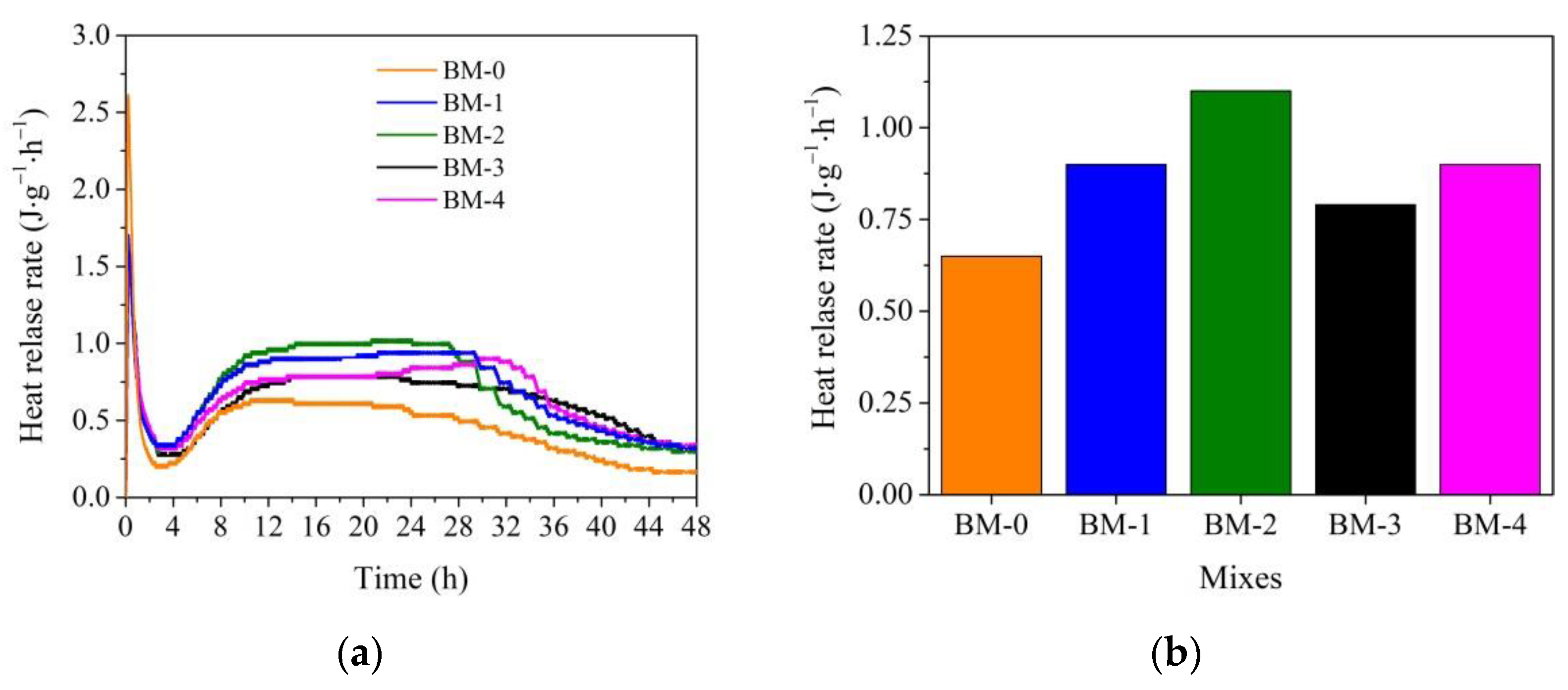

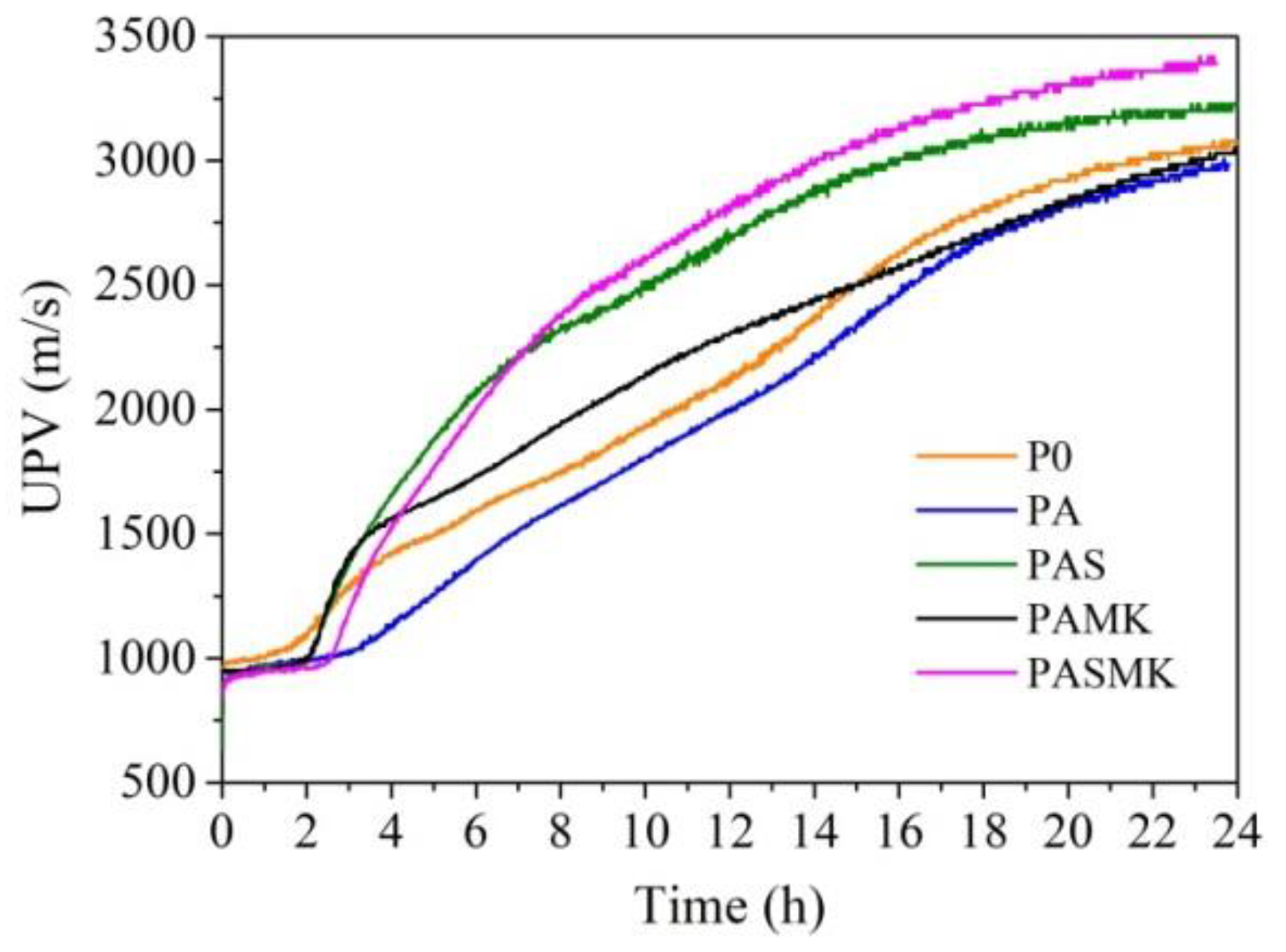
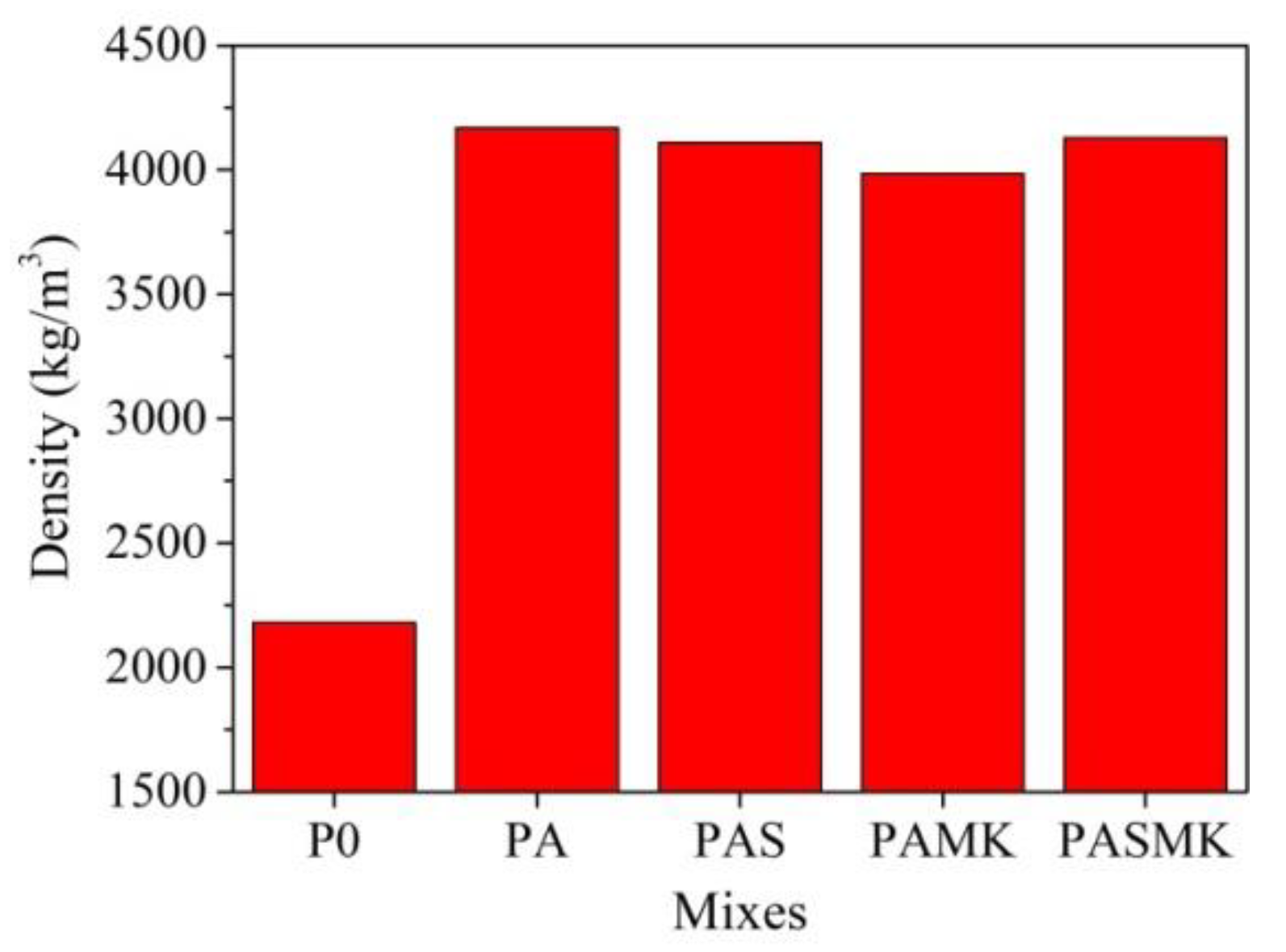

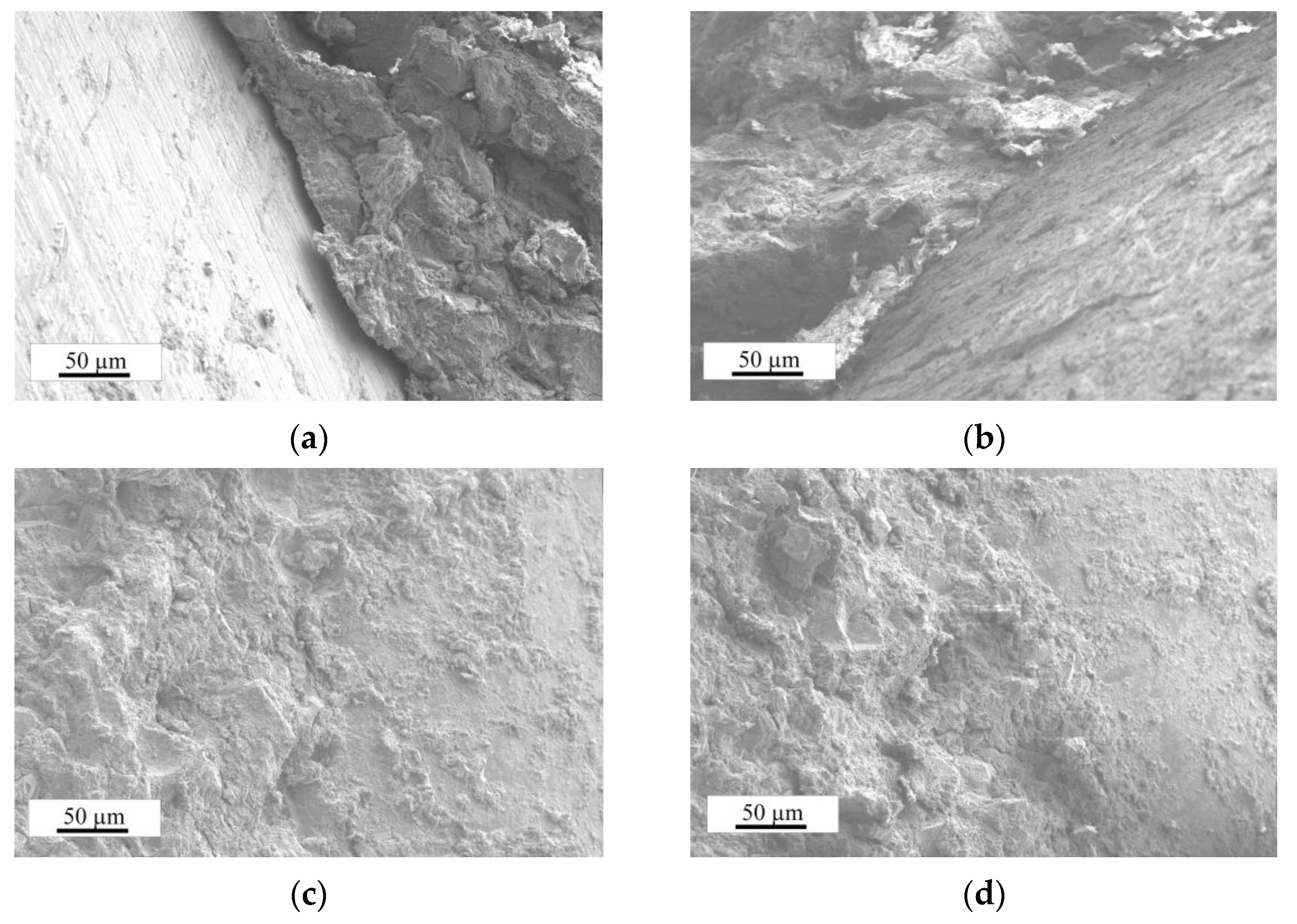


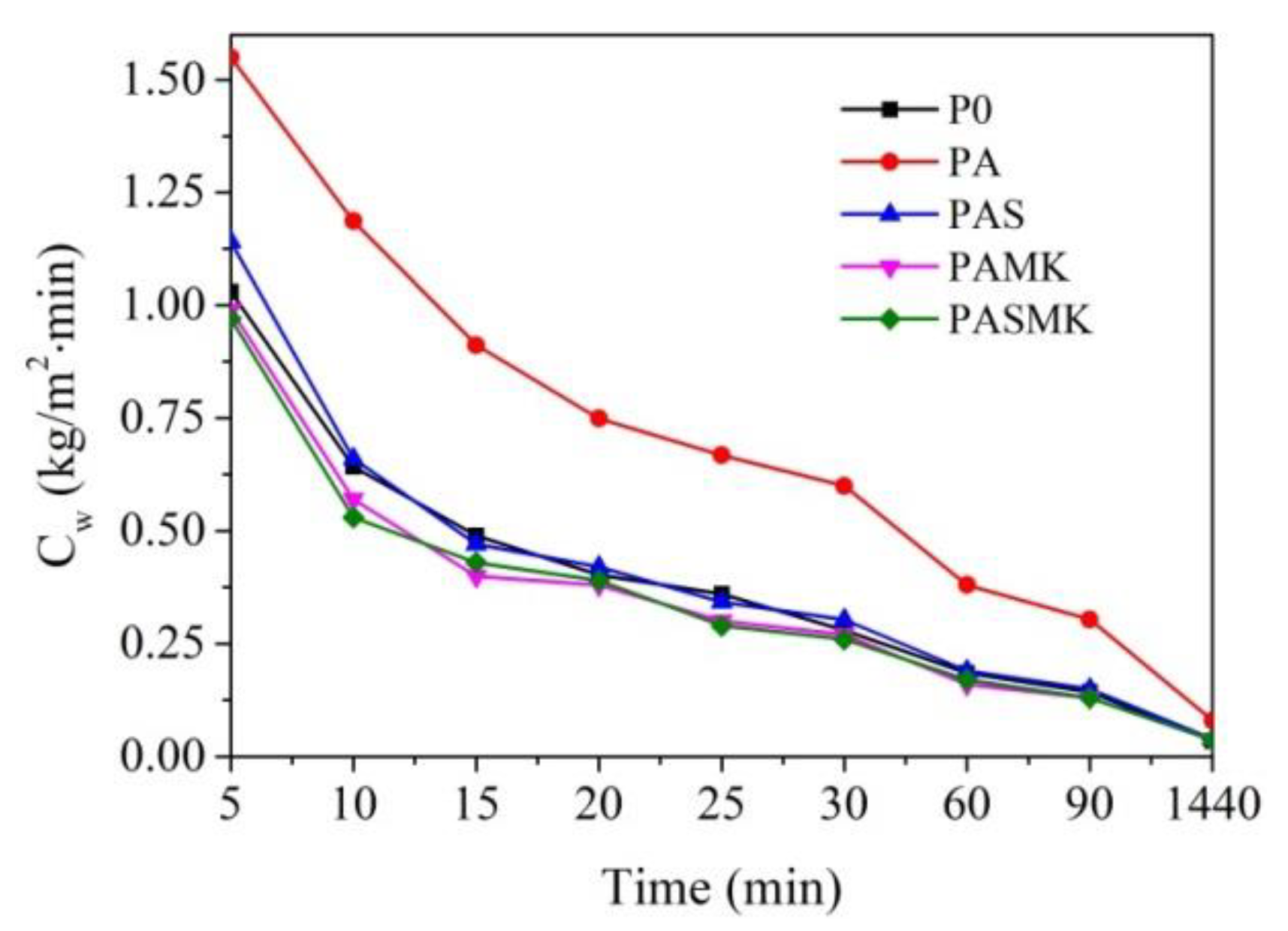
| Components | Chemical Composition (%) | |||||||
|---|---|---|---|---|---|---|---|---|
| SiO2 | Al2O3 | Fe2O3 | CaO | MgO | K2O + Na2O | C | LOI | |
| Portland cement | 20.8 | 6.12 | 3.37 | 63.5 | – | 1.03 | – | 0.30 |
| Microsilica | 98.0 | 0.30 | 0.05 | 0.30 | 0.10 | 0.30 | 0.40 | 0.60 |
| Metakaolin | 52.1 | 45.6 | 0.50 | 0.20 | 0.20 | 0.30 | – | 1.10 |
| Aggregate | Fraction | Particle Density, kg/m3 | Water Adsorption, % | Bulk Density, kg/m3 |
|---|---|---|---|---|
| Sand | 0/4 | 2345 | 0.53 | 1595 |
| Batch | Components | |||||
|---|---|---|---|---|---|---|
| PC | Sand Fraction 0/1 | Microsilica | Metakaolin | WMP | W/S | |
| BM-0 | 35 | 65 | – | – | – | 0.45 |
| BM-1 | 35 | 20 | – | – | 45 | 0.45 |
| BM-2 | 35 | – | 20 | – | 45 | 0.45 |
| BM-3 | 35 | – | – | 20 | 45 | 0.45 |
| BM-4 | 35 | – | 10 | 10 | 45 | 0.45 |
| Batch | Components | |||||
|---|---|---|---|---|---|---|
| PC | Sand Fraction 0/4 | Microsilica | Metakaolin | WMP | W/C | |
| P0 | 20 | 80 | – | – | – | 0.55 |
| PA | 20 | 35 | – | – | 45 | 0.55 |
| PAS | 20 | 25 | 10 | – | 45 | 0.58 |
| PAMK | 20 | 25 | – | 10 | 45 | 0.58 |
| PASMK | 20 | 25 | 5 | 5 | 45 | 0.58 |
| Batch | Testing Age in Days | Compressive Strength (MPa) | SD (MPa) | COV (%) |
|---|---|---|---|---|
| P0 | 2 | 27.3 | 1.42 | 5.22 |
| 7 | 32.5 | 2.29 | 7.06 | |
| 28 | 41.5 | 1.26 | 3.04 | |
| PA | 2 | 21.8 | 1.29 | 5.90 |
| 7 | 25.6 | 1.79 | 7.02 | |
| 28 | 35.7 | 1.46 | 4.08 | |
| PAS | 2 | 25.1 | 1.18 | 4.71 |
| 7 | 29.9 | 1.89 | 6.34 | |
| 28 | 42.8 | 1.67 | 3.89 | |
| PAMK | 2 | 23.9 | 0.93 | 3.90 |
| 7 | 28.3 | 2.22 | 7.87 | |
| 28 | 44.0 | 1.68 | 3.81 | |
| PASMK | 2 | 25.1 | 0.63 | 2.52 |
| 7 | 33.4 | 1.93 | 5.78 | |
| 28 | 46.6 | 1.87 | 4.03 |
Publisher’s Note: MDPI stays neutral with regard to jurisdictional claims in published maps and institutional affiliations. |
© 2022 by the authors. Licensee MDPI, Basel, Switzerland. This article is an open access article distributed under the terms and conditions of the Creative Commons Attribution (CC BY) license (https://creativecommons.org/licenses/by/4.0/).
Share and Cite
Pundienė, I.; Pranckevičienė, J.; Kligys, M.; Girskas, G. Study of the Course of Cement Hydration in the Presence of Waste Metal Particles and Pozzolanic Additives. Materials 2022, 15, 2925. https://doi.org/10.3390/ma15082925
Pundienė I, Pranckevičienė J, Kligys M, Girskas G. Study of the Course of Cement Hydration in the Presence of Waste Metal Particles and Pozzolanic Additives. Materials. 2022; 15(8):2925. https://doi.org/10.3390/ma15082925
Chicago/Turabian StylePundienė, Ina, Jolanta Pranckevičienė, Modestas Kligys, and Giedrius Girskas. 2022. "Study of the Course of Cement Hydration in the Presence of Waste Metal Particles and Pozzolanic Additives" Materials 15, no. 8: 2925. https://doi.org/10.3390/ma15082925





